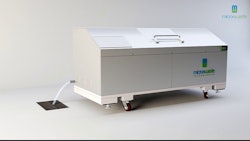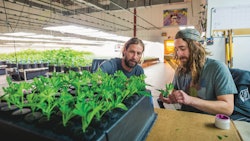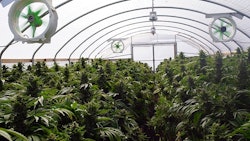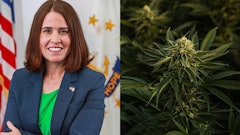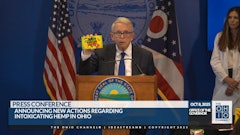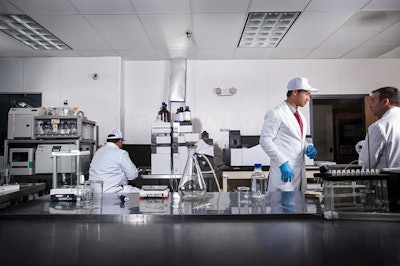
Jon Cooper envisions a future where cannabis and all its chemical benefits can fit inside a bottle: Morning routines will include a CBG-infused spritzer, and happy hours will feature foamy brews with an energetic burst of THC.
As the CEO of ebbu, a cannabis research company, Cooper says the physiological effects of these new products must be consistent if something like a THC-infused beverage is going to work—both for the partner manufacturers that build off his technology and for the consumers who are buying these end products. Those who buy in to the market in either capacity need to know what they’re getting.
ebbu focuses on two ways of solving that problem: the pharmaceutical formulations and the phytogenetic makeup of the plant. “Think of us as ‘Intel Inside’ for the industry,” Cooper says.
At ebbu’s Evergreen, Colo., laboratory, the work begins and ends with the inherent chaos in the plant’s chemistry. Within trichomes, the cannabis plant produces an almost limitless combination of cannabinoids, terpenes and flavonoids. Even on the same plant, different trichomes can produce different combinations of those compounds.
Pharmacology is built on a 1:1 scheme; you’ve got a headache, you take an ibuprofen capsule. Cannabis doesn’t necessarily work that way; it contains more than one active ingredient and acts on different bodily systems. Taste receptors come into play. Smell receptors. Chemical compounds bounce off one another in a concerto of physiological consequences.
We process those signals through G protein-coupled receptors and ion channels. These biological devices are found throughout the body. Capsaicin receptors allow the body to experience pain, for instance; opioid receptors block pain.
“Depending on that combination of compounds, [a particular receptor] cell is going to do something dramatically different,” Cooper says, pointing to the so-called entourage effect, which posits that many cannabis compounds affect human body only in combination with other compounds. “What’s the true chemical reaction that you’re looking for, in order to deliver a specific sensation or a specific benefit for that end user?” When Cooper describes this underlying question, he’s talking about both medicinal application and recreational use.
The long game is one of commoditization, which, Cooper says, tracks with broader industry trends. Once ebbu has compartmentalized the individual compounds—THC, CBD, CBC, CBG, etc.—the applications are far-reaching. There’s beer, certainly, but ebbu has set its sights on producing precise alternatives to painkillers and flavorful anti-inflammatory medication that can be added to a glass of water.
To get there, ebbu built a “drug discovery lab” and grew live human receptors for further study. Cooper’s team began developing different combinations of cannabinoids and terpenes, introducing them to the receptors and measuring the biological reactions. In the lab, they were able to knock out hundreds of compound combinations at a time.
“We’ve been doing this for years,” Cooper says. “We’ve been actually unraveling and actually proving what specifically are the entourage effects and how this stuff works.”
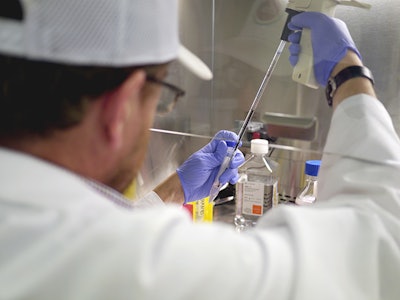
ebbu has already harnessed a spectrum of commercial and medical partnerships, including the American beer industry, with the goal of making the plant’s rich chemical profile more accessible and beneficial for end users. Later this year, newly formed Ceria Beverages will debut three styles of a cannabis-infused non-alcoholic beer.
Cooper says the industry is only going to expand its purview, looking increasingly toward the properties of what he calls “rare cannabinoids.” Almost three years ago, ebbu turned its attention to the CBGs and CBCs of the cannabis world, which aren’t being produced at mass-consumer levels.
To get at those compounds, ebbu could have taken a few years to properly cross-breed a consistently high-CBG generation of cannabis plants. Minor cannabinoids, like CBG, are often converted into THC or CBD during the plant’s growth cycle, making it highly unlikely to find anything beyond 1 percent of those cannabinoids in a plant’s chemical profile.
Instead, Cooper turned toward genetic editing. He describes that process as analyzing the chromosomal structure of the plant and “turning off and on” all the genes that you want, all in one fell swoop.
The goal here isn’t an enhanced Blue Dream. Rather, ebbu is “building plants that will primarily express a single cannabinoid.” A CBG plant, for instance.
“When you do that," Cooeper says, "you completely change the way we think about the production of cannabinoids, the expression of those cannabinoids and, really, the cost structure associated with those. And I think it also leads us toward a marketplace that really looks a lot more like a commodities marketplace … based on these different compounds.”
For those who belong to that school of thought, Cooper says he’s intent on ebbu leading the fray.
Combine that phytogenetic editing with ebbu’s trichome overexpression technology, and growers will increase their cannabinoid output per square foot by two, three, four times, according to Cooper. Naturally, on a long-enough timeline, he’s quick to point out, costs will fall in certain cannabis niches.
In early April, ebbu signed a 150,000-square-foot greenhouse partnership with Hardy Boy Farms in Denver. There, the company will continue on-site research with the chemical possibilities of hemp. (Cooper says that he believes 70 to 80 percent of cannabinoid production will come from hemp crops, as marijuana is used increasingly solely for “drug strain” production.)
“Everyone has a model today of going directly from a plant to an extract to a product—and out the door,” Cooper says. “And what we’re really talking about is separating the supply line of those cannabinoids from the actual hemp product that’s out there to significantly increase the efficiency of … global economic capabilities in order to really create a true commodities market.”
Top photo courtesy of ebbu










